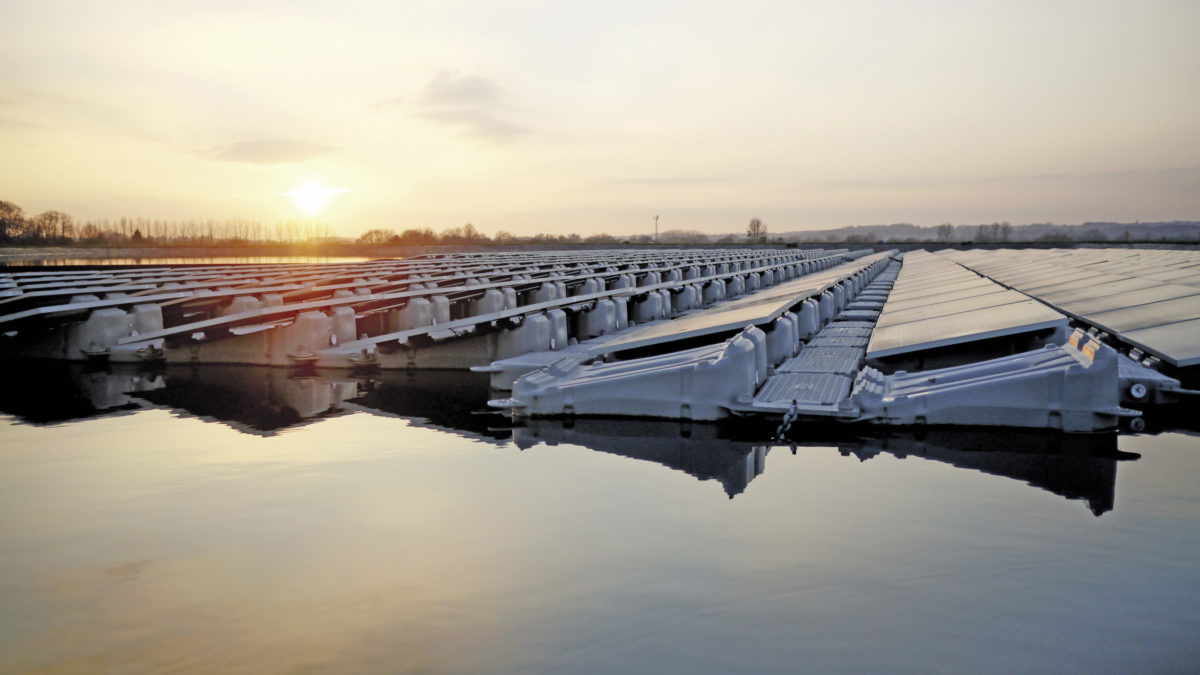Uttar Pradesh plans to work with international and Indian partners to set up piped canals and generate solar energy from the state’s bodies of water.
Speaking at a seminar in state capital Lucknow, Jal Shakti minister Mahendra Singh said Uttar Pradesh has the potential to produce more than 13.5 GW of electricity, and water bodies should be tapped to generate clean energy.
“UP [Uttar Pradesh] has over 75,000 km-long flowing canals, 33,800 government tubewells, 92 huge water reservoirs and 281 lift-irrigation canals,” said the minister, whose remarks were quoted in a financial daily newspaper. “All of these have a huge potential to generate hydro and solar energy using floating solar panels. [The] Bundelkhand and Mirzapur-Sonbhadra regions have favorable conditions for producing wind energy.
“The department pays Rs3,000 crore for electricity. If we are able to tap solar, wind and water energy, not only will we save this Rs3,000 crore but also sell energy to [the] power department and generate funds.”
Rising tide of floating solar
In August the state government approved a Rs750 crore floating solar plant on Rihand Dam, the first floating PV project in Uttar Pradesh and the largest in the country.
With land acquisition posing huge challenges to solar developers, the industry is veering towards water-borne facilities. It has been estimated, using only 10-15% of India’s water resources to host floating solar could generate up to 300 GW of electricity.
The cooling effect of water on panels reportedly drives up power output 3-5% and also helps conserve water as shading from the panels slows evaporation.
Floating solar is gaining traction worldwide, with the 1.1 GW of generation capacity of such projects installed globally last year expected to expand to 4.6 GW by 2022.
The solar policy announced by Uttar Pradesh in 2017 stipulates that by 2022 the state wants 8% of the power it generates to come from PV. That ambition would require 10.7 GW of generation capacity, 4.3 GW of it rooftop installations.
This content is protected by copyright and may not be reused. If you want to cooperate with us and would like to reuse some of our content, please contact: editors@pv-magazine.com.








By submitting this form you agree to pv magazine using your data for the purposes of publishing your comment.
Your personal data will only be disclosed or otherwise transmitted to third parties for the purposes of spam filtering or if this is necessary for technical maintenance of the website. Any other transfer to third parties will not take place unless this is justified on the basis of applicable data protection regulations or if pv magazine is legally obliged to do so.
You may revoke this consent at any time with effect for the future, in which case your personal data will be deleted immediately. Otherwise, your data will be deleted if pv magazine has processed your request or the purpose of data storage is fulfilled.
Further information on data privacy can be found in our Data Protection Policy.